Aarrow Signature Inset 5 Installation guide
- Category
- Stoves
- Type
- Installation guide

Operating & Installation Manual
BK075
EN 13240:2001+
Amd. A2:2004
Rev. 06
October2009
Part No. AFS1397
09
PLEASE RETAIN THIS GUIDE FOR FUTURE REFERENCE
Signature Inset 5

Congratulations on your choice of an Aarrow Stove.
More than 20 years experience has been put into the
development of our Signature Inset range to ensure ultimate
performance and years of trouble free use and enjoyment.
Every detail of the stove has been carefully designed and
engineered which is why we are so confident in the reliability
of our products.
Should you have any questions about our Signature Inset
stoves that are not covered by this manual, please contact
The Aarrow retailer in your area, or call our technical
support department on 0844 847 5107.
Copyright 2009
Arada Ltd
This booklet has copyright and may not be
copied in whole, or part, or used for any
purpose other than that for which it is supplied
without express written consent from Arada Ltd
Aarrow Signature Inset 5 Page 2
All Aarrow Signature Inset stoves are approved to
European Standard EN 13240 and CE marked.
These appliances listed within this manual have been
approved by HETAS Ltd as an intermittent operating
appliance for burning wood only.
PLEASE NOTE— Arada has a policy of continuous product development and therefore we
reserve the right to amend the specification without prior notice.
Due to printing cycles, items or options may be described before they are generally available
or after they have ceased, so please check with your retailer or dealer.

CONTENTS
Page 3 Aarrow Signature Inset 5
INTRODUCTION Page No.
Warning Notice 4
Safety Notices 5
The Principle Of The Stove 5
Check List 6-7
Data Plate Information 7
Technical data 8
INSTALLATION
General Precautions 9
Handling 9
Air For Combustion 9
Hearth 9-10
Flues & Chimneys 11-12
Sealing the back of the Signature 5 stove 12
to the decorative fire surround
Firebox Liner Panels 13
Optional Securing Bolts 14
Final Check 14
Building Control Consent Checklist 15
SERVICE & MAINTENANCE
Annual Maintenance 16
Cleaning 16
Chimney Sweeping 16
Door Glass 16
Outer Finish 16
Summer Storage / Non Usage 17
Adjusting The Door Hinges 17
Fuel Retainer Inspection 17
Fire Door Rope Replacement 18-19
Fire Door Glass Replacement 18-19
Disassemble The Primary Air Control 19
Service Record 20
OPERATING INSTRUCTION
Page No.
Suitable Fuel 21
Lighting The Stove 21
Burning Wood 22
Reduced Burning 22
Over Firing & Chimney Fires 23
Ash Removal 23
Air Inlet Controls 24
Fuel Retainer 25
Multi Purpose Operating Tool 26
Main Fire Door Handle 27
OPTIONAL EXTRA / ACCESSORIES 28
SPARE PARTS LIST 29-30
GUARANTEE 31-32
GENERAL DIMENSIONS
33
FACTORY CHECK LIST 34

Page 4 Aarrow Signature Inset 5
WARNING
IT IS A LEGAL REQUIREMENT
THAT THE INSTALLATION OF ALL
NEW OR REPLACEMENT, WOOD OR SOLIDFUEL HEATING
APPLIANCES ARE REQUIRED TO OBTAIN BUILDING CONTROL
APPROVAL FROM YOUR LOCAL AUTHORITY OR
THE
INSTALLATION WORK MUST BE CARRIED OUT THROUGH A
GOVERNMENT APPROVED COMPETENT PERSONS SCHEME
SUCH AS OPERATED BY HETAS.
IF IN DOUBT, CONTACT HETAS LIMITED
TELEPHONE NUMBER : 0845 634 5626
www.hetas.co.uk
THIS STOVE MUST NOT BE CONNECTED
TO A SHARED FLUE SYSTEM
TO ALL USERS
PETROLEUM COKE
SOME OF WHOSE BRAND NAMES ARE
‘CALCO’, ‘PETROCOKE’ AND ‘WONDERCO’
MUST NOT BE BURNED IN THIS APPLIANCE
BITUMINOUS HOUSE COAL
SHOULD NEVER BE USED IN YOUR STOVE
TO USE THESE FUELS WILL INVALIDATE
THE APPLIANCE GUARANTEE.
IF IN DOUBT CONTACT THE SOLID FUEL ASSOCIATION
TELEPHONE NUMBER 0845 601 4406
www.solidfuel.co.uk

INTRODUCTION
Page 5 Aarrow Signature Inset 5
SAFETY
A fireguard conforming to BS 8423:2002
should be used in the presence of children
and old or infirm people.
Please note, this appliance should be used
with the fire door closed at all times except
when re-fuelling, initial lighting or de-ashing.
Do not use aerosol sprays or any other
flammable materials near the appliance
under fire.
Do not fit an extractor fan in the same
room as the appliance.
Fire cement is caustic, hand and eye
protection should always be worn,
prolonged contact with the skin should be
avoided.
Arada Ltd will not be responsible for any
consequential or incidental loss or
injury however caused.
Before continuing any further, with the
installation of this appliance please read the
following guide to manual handling.
• Always obtain assistance when lifting the
appliance
• When lifting always keep your back straight,
bend your legs not your back
• Avoid twisting at the waist. It is better to
reposition your feet.
• Avoid upper body/top heavy bending. Do
not lean forwards or sideways when
handling the fire
• Always grip with the palms of your hands
do not use your fingertips for support
• Always keep the stove as close to the body
as possible as this will minimise the
cantilever action.
THE PRINCIPLE OF THE STOVE
Your Aarrow stove is built to the highest
standard of craftsmanship using the best
materials and the most modern equipment
available. It is a highly efficient and sophisticated
piece of machinery and when properly installed
and operated it should provide a lifetime of
heating satisfaction.
Safety is the most important consideration when
installing your fire. If not properly installed and
operated a house fire may result. Installation
must comply with the Building Regulations and
conform to all safety standards.
Aarrow produce a variety of appliances ranging
from the traditional to the modern in style and
appearance, all bristling with ‘High Tech’
features.
The fire door is fitted with a special high
temperature ceramic glass panel through which
the fire can be viewed.
The stove is lined with firebricks or heat
reflective panels which ensure complete
combustion and provide a good heat store to
even out fluctuations in burning.
An internal throat plate produces turbulence to
encourage secondary combustion and direct the
flue gas around the whole upper firebox before
allowing it to escape up the chimney.
Aarrow stoves are also fitted with an ‘air wash’
so called because it provides a curtain of high
speed preheated air behind the glass to help
keep it clean and provide secondary air/over
draught.
Optimum setting will only be established by
experience in firing the appliance, and will
depend on the type of fuel, the position of the
appliance in the house, and conditions of
chimney etc.

Part Description & Visual Aid (not to scale)
Signature
Inset 5
1. Fuel Retainer
1
2. Throat Plate
1
3. Side Liner
2
6. Tertiary Air Bar
1
7. Ash Pan
1
8. Operating Tool
1
9. Instruction Manual
1
4. Back Liner
1
5. Wood Burning Tray
1
CHECK LIST
Page 6
Inside the appliance body you should find the following:
Aarrow Signature Inset 5

CHECK LIST
Page 7
Inside the appliance body you should find the following, Cont:
Part Description & Visual Aid (not to scale)
Signature
Inset 5
10. Fire Door Handle
1
11. Heat resistance Mitten
1
12. Optional Fixing Bolts
2
Data Plate Information
Please Note :
The Aarrow Signature 5 stove is fitted with a data plate located
on the bottom of the right hand leg as shown opposite.
The data given is that registered on the HETAS website,
stating the output and performance of the stove.
The CE mark indicates that the stove performance has been
independently certified by a competent body.
Data Plate
Location
Aarrow Signature Inset 5
Agdhs……….. …...
dad…………………..
Aaasdad…… … …..
Sgrt……… ………...
Rty…… fdfffd…….
Tyryhf……………...
DATA PLATE INFORMATION

TECHNICAL DATA
Page 8 Aarrow Signature Inset 5
Technical Data
Signature
Inset 5
Nominal Heat Output (kW) 4.8
Efficiency Nett (%) 80.1
Mean Flue Gas Temperature (°c)
261
Mean CO Emissions @ 13% O2 (%) 0.50
Height (mm) 590
Width (mm) 562
Depth Overall (mm) (Inc. handle) 435
Depth From Fire surround (mm)
(Inc. handle)
210
Height to shelf above the appliance 300
Weight Packed (kg) 68
Standard Chair-brick Size Fitting 16” & 18”
Weight Nett (kg) 65
Distance to combustible material
surrounding the appliance (mm)
200

INSTALLATION
Page 9 Aarrow Signature Inset 5
GENERAL PRECAUTIONS
Note : All local regulations, including those refer-
ring to National and European standards need to
be complied with, when installing the appliance.
The Building Regulations for England and Wales
2000 ref Approved Document J 2002 edition
(issued by the DTLR).
The Building Standards (Scotland) (Consolidation)
Regulations.
Detailed recommendations for installation of
appliances, chimneys and flues are outlined in the
current issue of the following British Standards :
BS6461, BS8303 & BS4543.
Any Manufacturer’s Instructions must not be
taken as overriding statutory
requirements.
Before any installation work is undertaken con-
sideration must be given to the Health and
Safety at Work Act 1974. Safe working prac-
tices should be followed at all times.
During installation ensure that adequate
precautions are taken to avoid unnecessary risk to
yourself or any householder. In
particular the danger from the caustic nature of the
fire cement should be avoided by using these ac-
cepted methods :
• Wear gloves when handling fire cement
• Wear goggles when chiselling or looking up
chimneys.
Make sure that Building Regulations are adhered
to during installation along with any local by-laws.
In the case of heating systems make sure that the
pipe work is correctly bonded to ensure electrical
earth continuity.
ASBESTOS
All Aarrow stoves contain no asbestos in there
manufacture or construction. If there is a possibility
of disturbing any asbestos in the course of the
installation, then please seek specialist guidance
and use appropriate protective equipment.
HANDLING
By the time you read this, you will appreciate the
weight of the appliance. The safety & handling
guidelines as set out on page 5 of this manual
should be followed.
To make movement easier internal fittings, fuel
retainers, grates, firebox liners, flue outlets, hot
plates, throat plates etc, can be removed.
Care should be taken to make sure that the hinges
are not damaged during installation.
HEARTH / FIRE SURROUND
The stove mustl be installed on a floor with
adequate load bearing capacity. If the existing
construction does not meet this prerequisite,
suitable measures (e.g.: load distributing plate)
should be taken to achieve it.
Ideally, the appliance should stand on a
constructional hearth of non-combustible
materials not less than 125mm (5”) thick
conforming to Building Regulations.
Dimensions of the hearth should project at least
228mm (9”) forward of the front of the appliance
and 150mm (6”) at the sides.
The surface of the hearth should be free of
combustible materials. In most buildings with solid
concrete or stone floors, the requirement will be
met by the floor itself, but mark the hearth to
ensure floor coverings are kept well away or use
different levels to mark the hearth perimeter.
AIR FOR COMBUSTION
There must always be a permanent means of
providing air for combustion into the room in which
the stove is installed. A permanent vent with a total
free area of at least 550mm2 for every KW rated
above 5KW should be connected directly to the
outside air or to an adjacent room which itself has
a permanent vent of the same size direct to the
outside air. The positioning of any air vent must be
such that it cannot be liable to blockage or
obstruction. Please note: The fitting of an
extractor fan to either of these rooms is not
permitted.
See page 10 for detailed image

Page 10 Aarrow Signature Inset 5
Fig 1
Signature 5 stove cross sectional
view, installed into a standard
16” or 18”chair brick
INSTALLATION
Throat forming lintel
Insulating infill
Expansion joint
Thin straw board
or corrugated
cardboard etc.
Non-combustible sealing rope
( See page 12 )
Constructional hearth
Superimposed hearth
Fire back
To BS 1251:1987
Decorative fire surround
( Non-combustible )
The stove should fit into a standard 16” or 18” open fire place without the removal of the
fire-back (chair brick), provided the same complies to BS 1251:1987.
Some minor adjustment may be required to ensure a good fit. The decorative fire surround
should be manufactured from non-combustible materials only.

INSTALLATION
11 Aarrow Signature Inset 5
FLUES AND CHIMNEYS
The flue draw is critical on any installation and
should be checked to ensure that it matches what
is specified. If it is higher than recommended,
provision must be made to correct the over draw.
The draw can vary in different weather conditions
and the customer should be made aware of this.
Failure to correct an over-drawing flue will
invalidate the warranty.
Please remember that chimney draught is
dependent on four main factors :
• Flue gas temperature
• Flue height
• Flue size
• Flue terminal
The stove must be connected to a suitable and
efficient flue that takes products of combustion
(fumes) from the stove outlet to the outside air. To
ensure a good up draught it is important that the
flue gases are kept warm and that the flue size
suits the stove. The termination of the outlet at the
top of the flue also needs to comply with Building
Regulations. The minimum effective height of the
flue must be at least 4.5 metres from the top of the
stove to the top of the flue outlet. When warm the
flue draught should be between 0.1 to 0.2 mb.
A chimney may comply with regulations but still be
subject to down draught and similar problems. A
chimney terminating above the ridge level is
generally less likely to suffer such problems.
If a new chimney is being provided it should fully
comply with the relevant Building Regulations that
specify the requirements for solid fuel burning
installations. Suitable types of chimney include the
following :
Masonry Chimney : Built with clay or concrete
liners, or a chimney block system meeting Building
Regulations. These types of chimney should be
installed in accordance with the Building
Regulations and BS 6461:Part 1.
Factory Made Insulated Chimney : Complying
with BS 4543:Part 2 (often called “Class 1
prefabricated metal chimney”). These types of
chimney should be installed in accordance with
Building Regulations and BS 7566: Parts 1 to 4.
Due to the gradual introduction of Europe Chimney
Standards, chimneys will be specified according to
their performance designation as defined in BS EN
1443 that covers the General Requirements for
chimneys. The minimum performance designation
required for use with solid fuel burning stoves is
T450 N2 S D3.
The flue and chimney installation must be carefully
checked by a competent person before fitting the
stove to ensure it is suitable and will work safely.
If the chimney is old (ie: built of brick or stone
without a liner) or being opened up for reuse
additional checks and smoke testing as described
in Appendix E of the Approved Document J 2002
Edition should also be carried out to ensure the
flue and chimney are in good operating condition.
Unless the existing flue is in good condition with
suitable access for collection and removal of
debris. If the flue size is more than 225mm (9”)
diameter or 200mm (8”) x 200mm (8”) square, a
suitable lining of 150mm (6”) diameter should be
fitted, or if the flue length is over 5.5 metres one
size larger than the appliance outlet should be fit-
ted. This should be a double skin stainless steel
flexible liner that is independently certified for use
with solid fuel. Details of suitable linings for use
with wood & solid fuel are given in the Official
HETAS guide that can be viewed on their website
at www.hetas.co.uk.
It is also important that suitable flue pipe complying
with the Building Regulations is used to connect
the stove to the flue in the chimney and that suit-
able access is provided into the flue for regular
inspection and sweeping of the flue ways.
The installer should comply with Building Regula-
tions requirements in respect of providing a Notice
Plate giving details on the chimney, flue lining,
hearth and fireplace installation. Approved Docu-
ment J of the Building Regulations for England &
Wales is available from The Stationery Bookshops
and can also be viewed at the ODPM website at
www.safety.odpm.gov.uk/bregs/brads.htm.
Details on the relevant Building Regulations and
BS British Standards are given in the “ General
Precautions” section of these instructions.
Chimneys should be as straight as possible.
Horizontal runs should be avoided.

INSTALLATION
Page 12 Aarrow Signature Inset 5
Sealing the back of the stove to the
decorative fire surround
In order for the stove to operate at maximum efficiency
it is necessary to achieve a good seal between the
back face of the stove convector section, and the deco-
rative hearth surround (See Fig 1 on page 10)
The Signature 5 inset stove is supplied with a pre-cut
length of 7mm dia. heat resistant rope (1.85metres)
with a self adhesive edge to achieve this.
Alternative methods may also be employed to seal the
stove if more appropriate in a particular installation. IE
fire cement, high temp silicon sealant etc..
To apply the rope seal, peel back a short section of the
adhesive protection paper (about 150mm) at a time
and apply the rope to the back face of the stove con-
vector section as shown below. Apply the rope tight
into the angle created where the side overhangs the
back section by approximately 3mm.
Fit the rope all the way round and carefully bend it
round the left and right, top & bottom corners without
stretching the rope.
The rope will easily form a right angle to do this without
cutting.
The rope will compress forming a good seal when the
stove is pulled back into the chair brick by the mounting
bolts.
FOR ALL APPLIANCES
Access for cleaning the flue should be
incorporated in the system other than through the
appliance (eg: a soot door or access through
register plate). Purpose made soot doors and
inspection lengths are available from manufactures
of all systems. Ensure that the whole length of the
flue can be reached from the soot door.
Note: If the appliance is fitted with a draught
stabiliser or if one is fitted to the flue pipe or
chimney in the same room as the appliance,
then the permanent air entry opening (or
Openings) should be increased by 300mm2
for each KW of rated output.
For advice on flues and chimneys contact:
NACE (National Association of Chimney
Engineers)
Telephone : 0800 0924019
www.nace.org.uk
OR
NACS (National Association of Chimney
Sweeps)
Telephone : 01785 811732
www.chimneyworks.co.uk
OR
HETAS (Official Body To Approve Solidfuel
Domestic Heating Appliances)
Telephone : 0845 6345626
www.hetas.co.uk
Rope Seal Fitted
Detail A
Detail A
IMPORTANT NOTICE:
During installation it is advisable to remove the
Stove Door. The stove may become front heavy
should the door be opened during positioning, prior
to the stove being secured in place with the
provided masonry bolts, ( See page 14 ). If the
stove is left unsupported and the door is fully open
it may tip forward causing damage to the stove
door or stove body or to the surrounding hearth /
brickwork etc.

Page 13 Aarrow Signature Inset 5
INSTALLATION
FIREBOX LINER PANELS
The Aarrow Signature Inset 5 stoves use firebox
liner
panels to the sides and back. See fig 2
The throat plate sits on top of the sides and rear
panels. These should come fitted to your stove, if
however they are not, proceed as follows to fit
them.
• Open the fire door.
• Remove the cast fuel retaining bar, by lifting
free from the front brace.
• Set the small liner into the back of the
firebox.
• Insert the side liner panels. (See Fig. 3)
• Fit the throat plate with the single bend to
the front facing up. The projecting lugs sit
on top of the side liners. The long centre tab
on the back edge rests on the tertiary air
bar above the rear liner. (See
Fig.4 & 5)
• Replace the front fuel retaining bars.
Note: Neither the rear firebox liner nor the side
firebox liners are ‘handed’, both faces are
suitable for direct contact with the fire bed.
Note : Cracking of the liner panels does not
effect efficiency.
Fig. 2. Overall View Of Liners
& Throat Plate Assembly
Fig. 3. Liners Inserted
Fig. 4. Inserting The Throat Plate
Fig. 5. Liners & Throat Plate Correctly Fitted
Tertiary air bar

Page 14 Aarrow Signature Inset 5
INSTALLATION
FINAL CHECK LIST
Before handing over the installation to the
customer it is requirement under Document J that
the appliance is lit and the functioning of the
chimney system is checked for satisfactory
operation.
• Be sure that the chimney is operating
and ALL smoke and fumes are vented to
the atmosphere through the chimney
terminal.
• Check all joints and seals.
• Clean the outside of the appliance to
prevent any stains becoming burnt on.
• Check the flue draught which should
read 1 - 2mm, or 0.1 - 0.2 mbar.
• If Building Control Consent route is being
sought please complete the check list on
page 15.
• For a registered Competent Persons
Scheme, such as HETAS, please
complete the Certificate Of Compliance,
which is used for checking and reporting
the installation as imposed by the
Government
• Explain the controls and operation of the
appliance to the customer.
The details on the Building Control Consent
Checklist ( Page15 ) must
be checked and
completed in full by the installer at the time of
installation.
Please answer all questions as fully as possible.
Aarrow stoves cannot be held responsible for the
chimney or installation.
MASONRY FIXING BOLTS
The Signature Inset 5 is supplied with masonry fixing
bolts to allow the installer to bolt the stove in place, to
the back of the chair brick if required.
In order to do this is will be necessary to remove the
‘knock out’ hole plugs in the rear of the stove.
These are located behind the tertiary air bar, which
must be removed to access these fastening holes.
See Fig a, below.
The fixing bolts supplied with the stove are designed to
be screwed directly into masonry without the need for
any form of wall plugs. A pilot hole of 6mm will need to
be pre-drilled. Take care not to over tighten the fixing
bolts as this may damage the chair brick / wall, or strip
out the formed thread requiring involved repair work.
Fixing bolts supplied are M10 x 75mm, See Fig b, If
longer bolts are found to be required these will have to
be supplied by the installer.
Fig a.
Bolt fixing ‘knock outs’
Fig b.

Page 15 Aarrow Signature Inset 5
BUILDING CONTROL CONSENT CHECKLIST
Hearths, Fireplaces, Flues and chimneys
This checklist is to ensure heaths, fireplaces, flues and chimneys are satisfactory, and show what you have done to comply with the
requirements of the Building Regulations 2000 approved Document J 2002
1. Building address where work has been carried out …………………………………………………………………………….....
…………………………………………………………………………………………………………………………..
…………………………………………………………………………………………………………………………..
2. Identification of hearth, fireplace chimney or flue
3. Firing capability: solid fuel / wood / gas /.
4. Intended type of appliance.
State model and output.
5. Ventilation provision for the appliance:
State type and area of permanently open vents.
I/We the undersigned confirm that the above details are correct. In my opinion, these works comply with the
relevant requirements in part
J of Schedule 1 of the Building regulations.
Print name and title…………………………………………………………………Profession…………………………………….
Capacity…………………………………………………………………………….Telephone No. ……………………………….
Address………………………………………………………………………………………………..Postcode…………………...
Signed………………………………………………………………………………..Date………………………………………….
Registered member of.. (e.g. CORGI, OFTEC, HETAS, NACE, NACS)…………………………………………………………..
7. Hearth, form of construction, new or existing ?
8. Inspection and testing after completion
Test carried out by:
Test and Results:
Flue inspection:
Visual:
6. Chimney or flue construction
a, State the type or make and whether new or existing
b, Internal flue size (and equivalent height, where calculated
natural draught gas appliances only)
c, If clay or concrete flue liners used confirm that they are
correctly jointed with socket end uppermost and
state jointing materials used.
d, If an existing chimney has been refurbished with a new
Liner, Type and make of liner fitted.
e, Details of flue outlet terminal and diagram reference.
Outlet Details: / Complies with:
f, Number and angle of bends
g, Provision for cleaning and recommended frequency.
INSTALLATION

Page 16 Aarrow Signature Inset 5
ANNUAL MAINTENANCE
It is important that your appliance is regularly
serviced in accordance with these instructions.
This should be carried out at least annually by a
qualified person and should consist of the
following :
CLEANING
Important; Under some circumstances soot can
quickly build up on the throat plate and adjacent
areas. The throat plate should be removed and
checked monthly, and any debris stripped off.
Similarly, clean the upper surface of the firebox.
Remove the firebrick linings and throat plate,
inspect all rope gasket on doors, glass etc, and re
-order any items that may need replacing from
your Aarrow dealer.
With a wire brush clean inside the appliance
paying particular attention to the small inlet holes
of the air wash on the inside, above the fire door.
Sweep the chimney and confirm that it is sound.
Examine all joints in the flue pipe etc, and re-seal if
necessary. Re-assemble and leave with the air
inlet and air wash control about half way open.
This will allow a free flow of air through the
appliance thus preventing moisture and
condensation from building up inside the stove and
chimney.
CHIMNEY SWEEPING
Sweeping should be carried out with an
appropriate sized bristle brush and rods to suit
chimney size and type. As with all appliances
regular sweeping of the flue is essential to avoid
danger of blockage and the escape of poisonous
fumes. Access for cleaning should also be
incorporated in the chimney. (e.g.. Soot door )
Any existing chimney should be swept prior to
installation of the appliance, and swept again a
second time within one month of regular use after
installation to establish frequency of sweeping
required. This should be done by a competent
person such as a NACS chimney engineer who will
provide a Certificate Of Chimney Sweeping.
The whole flue way including the outlet must be
swept at least twice per burning season. It is
important that the flue ways, flue pipe and chimney
be cleaned prior to lighting the fire after a
prolonged shut down period.
DOOR GLASS
The door glass should remain clear during normal
burning. However, under certain conditions, such
as burning at a low rate or damp wood, or over-
night burning, the glass may become somewhat
blackened. To remedy this, operate the appliance
at a fast rate. Alternatively when the stove is cold,
open the door and clean the inside face of the
glass with a damp cloth or with glass cleaner
(available from fire stockists). A piece of cloth
moistened with vinegar and dipped in wood ash
(not coal ash) will provide a good soft scourer to
remove the soot without scratching the glass.
OUTER FINISH
The outer finish of the appliance is a durable high
temperature paint. It is best cleaned by brushing
down with a clean shoe brush. Do not allow
moisture to remain on the appliance whilst cold or
surface rust may form.
The high temperature paint should not require at-
tention for some time, depending on use. The hot-
ter the fire burns the sooner repainting will be nec-
essary. Aerosol tins of paint are available for com-
plete refurbishing.
Before repainting make sure that the fire is out and
the stove is cold.
• Remove the door glass
• Lightly wire brush, or rub with wire wool, the
body of the appliance to remove any loose
paint or rust.
• Mask or remove items such as brass work.
• Any adjacent brickwork, mantelpiece, hearth
etc, should be carefully masked for quite a
distance around the appliance. This precau-
tion is to prevent discolouration of the sur-
rounding brickwork or wall paper etc.
Re-spray in a well ventilated area, avoid breath-
ing the vapour. Refer to safety instructions on
paint cans.
• When the paint is dry refit the door glass &
any other parts previously removed.
• Leave the appliance for eight hours before
lighting a fire.
• Burn slowly for the first four hours, then build
up heat slowly to gradually cure paint.
Note: Use genuine Aarrow touch up spray as some
paints interact. This could ruin the finish and
invalidate the guarantee.
SERVICE & MAINTENANCE

Page 17 Aarrow Signature Inset 5
SERVICE & MAINTENANCE
SUMMER STORAGE / NON
USAGE
Please ensure that your stove is left clean and
moving components are well lubricated for the
summer months (during periods of prolonged non
use). If possible store the throat plate outside of
the stove, check all moveable components, at
regular intervals, to ensure they are moving freely.
Allow air movement through the stove, by opening
the air wash and primary air inlet controls to about
half way open or leave the door ajar. This will allow
a free flow of air through the appliance thus pre-
venting moisture and condensation
forming inside the stove and chimney. This
preventative maintenance will ensure your stove
stays in the best condition for the coming winter
months.
ADJUSTING THE DOOR HINGES
Once the appliance has been under fire for a
period of time the fire door may appear to have
moved out of alignment in relation to the door
aperture or catch. This is quite normal and due to
the settling of the casting.
The fire door can be re-aligned as follows :
• When the appliance is cold, open the fire
door so that it is at right angles to the front of
the stove.
• Lift the fire door up off its hinges.
• Gently tap the hinge pins in the direction to
compensate for the misalignment. (Fig. 6)
• Re-fit the door and check to ensure it now
sits square to the body; if not repeat the
above steps.
If the fire door needs to be raised, please follow :
• When the appliance is cold, open the fire
door so that it is at right angles to the front of
the stove.
• Lift the fire door up off the hinges.
• Drop one washer 6.35mm ID x 14mm OD
on the top and bottom hinge pins.
• Refit the door and check.
Please Note : There is no adjustment to the
door lock / catch assembly. However,
periodically check the tightness of the
retaining screw to the end of the door handle
shaft. ( Fig. 7 )
FUEL RETAINER INSPECTION
A fuel retainer is supplied with the stove.
Periodically check for any bowing to the
fuel retainer and replace as necessary.
Please Note :
This operation should only be carried out when
the appliance is unlit and cold.
Fig. 6. Adjusting The Door Hinges
Fig. 7. Retaining Screw Tightness
Tighten
Screw

Page 18 Aarrow Signature Inset 5
SERVICE & MAINTENANCE
FIRE DOOR ROPE
REPLACEMENT
Periodically, visually check over the fire door rope
seal for any damage, cuts or tears and any
detached sections. The rope gasket can be
replaced, using the universal rope kit (see spare
parts guide Page 28/29), please follow the
instructions below :
• Ensure the appliance is cold.
• Lift the door off the appliance and lay onto a
flat surface with the rear face upwards.
• Carefully remove the old rope gasket and
old adhesive. Take note of the layout of the
old rope seal. Ensure no traces of the old
adhesive or rust / flaky paint is present, as
this will result in a unsound joint.
• Apply the rope adhesive following the
instructions on the bottle.
• Press the rope gasket into the channel on
the rear of the door casting, following the
same layout as the old rope seal. See Fig.8
• Just before the final end, cut the rope seal to
length and glue into position.
• Allow 30 minutes, before refitting the door to
the appliance.
FIRE DOOR GLASS
REPLACEMENT
In the event of the door glass being broken it can
easily be replaced. Please follow :
• The door should be lifted off the hinges so
that this operation can be carried out on a
work bench or similar level surface.
• Unscrew the four screw fixings securing the
glass clips and remove both clips and
fixings.
• Carefully remove any pieces of broken
glass, and sealing gasket, (wearing suitable
gloves as protection). Take note of the
position and joint of the rope gasket.
• Replace the glass rope gasket; start at the
bottom of the window, centrally, push the
adhesive side of the rope into the groove on
the rear of the casting. Gradually work your
way around until the end of the rope meets.
See Fig. 9.
• Re-seat the new glass, ensuring the glass
sits flat against the gasket. See Fig. 10.
• Replace the four retaining clips and fixing
screws. Do not over tighten the fixings as
damage may occur to the glass. See Fig.11.
• Refit the door assembly back onto the stove;
carefully lift the door over the hinge and slot
into place.
Fig. 8. Rope Replacement
Fig. 9. Lining Up Gasket Rope
Joint
Rope
Gasket

Page 19 Aarrow Signature Inset 5
SERVICE & MAINTENANCE
Please Note—This should be carried out when
the fire is cold and unlit.
Fig. 10. Positioning The Glass
Fig. 11. Tightening The Glass Clip
FIRE DOOR PRIMARY AIR INLET
Once a year a check is required to inspect the
primary air inlet assembly, located at the base of
the fire door.
• Lift the door assembly from the stove body
and place on a level work bench, with the
rear face upper most.
• Remove the 2 x no. fixings.
• Working from the front, withdraw the oval
assembly from the door casting.
• Clean the air slots within the door casting
and slider plate.
• Place the oval assembly into the door oval
aperture and fix from the rear of the door.
See Fig 12
Fig. 12. Rear Of Oval / Slider Assembly
Slider
Rear Of Oval

Page 20
SERVICE & MAINTENANCE
Should you have any questions about your Aarrow Signature Inset stove that are not
covered in this manual please contact your Aarrow dealer.
Please keep all repair receipts safely.
Please ensure you have this manual available when an engineer visits so they can
complete the service record chart.
Date of Visit Company Details Work Carried Out Signature
Service Record
Aarrow Signature Inset 5
Page is loading ...
Page is loading ...
Page is loading ...
Page is loading ...
Page is loading ...
Page is loading ...
Page is loading ...
Page is loading ...
Page is loading ...
Page is loading ...
Page is loading ...
Page is loading ...
Page is loading ...
Page is loading ...
-
 1
1
-
 2
2
-
 3
3
-
 4
4
-
 5
5
-
 6
6
-
 7
7
-
 8
8
-
 9
9
-
 10
10
-
 11
11
-
 12
12
-
 13
13
-
 14
14
-
 15
15
-
 16
16
-
 17
17
-
 18
18
-
 19
19
-
 20
20
-
 21
21
-
 22
22
-
 23
23
-
 24
24
-
 25
25
-
 26
26
-
 27
27
-
 28
28
-
 29
29
-
 30
30
-
 31
31
-
 32
32
-
 33
33
-
 34
34
Aarrow Signature Inset 5 Installation guide
- Category
- Stoves
- Type
- Installation guide
Ask a question and I''ll find the answer in the document
Finding information in a document is now easier with AI
Related papers
-
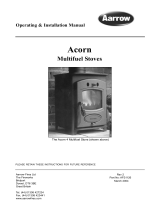 Aarrow Fires Acorn 4 User manual
Aarrow Fires Acorn 4 User manual
-
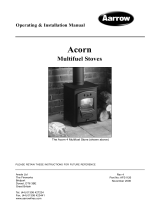 Aarrow 4 User manual
Aarrow 4 User manual
-
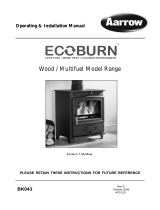 Aarrow Fires EcoBurn AFS1221 User manual
Aarrow Fires EcoBurn AFS1221 User manual
-
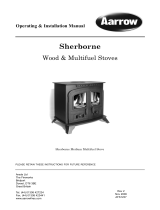 Aarrow Fires Sherborne Wood & Multifuel Stoves User manual
Aarrow Fires Sherborne Wood & Multifuel Stoves User manual
-
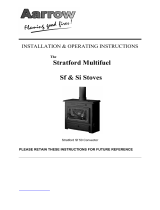 Aarrow Fires Stratford Sf 50 Convector User manual
Aarrow Fires Stratford Sf 50 Convector User manual
-
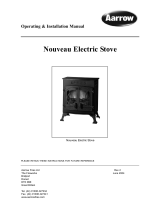 Aarrow NOUVEAU Operating & Installation Manual
Aarrow NOUVEAU Operating & Installation Manual
-
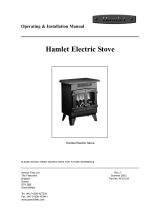 Aarrow Hamlet Operating & Installation Manual
Aarrow Hamlet Operating & Installation Manual
-
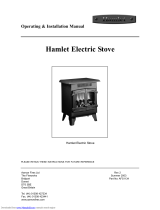 Aarrow Hamlet Operating & Installation Manual
Aarrow Hamlet Operating & Installation Manual
Other documents
-
United States Stove GLV1 Owner's manual
-
USSC GLV1 User guide
-
Vollrath Cover, Inset, Hinged Installation guide
-
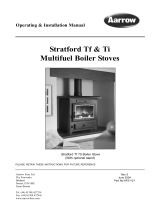 Aarrow Fires Boiler Stratford Tf User manual
Aarrow Fires Boiler Stratford Tf User manual
-
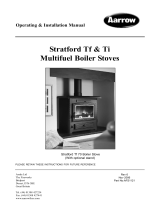 Aarrow Fires Tf 70 User manual
Aarrow Fires Tf 70 User manual
-
Hagerco 906S - PVC Door Shoe Installation guide
-
Arada BK545 Hamlet Solution 5 Inset (S4) stove Installation guide
-
Clarke PARLOUR User manual
-
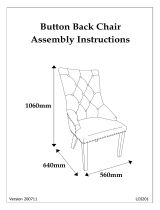 Julian Bowen VEN201 Assembly Instructions
Julian Bowen VEN201 Assembly Instructions
-
Charnwood Bay BX Operating instructions












































